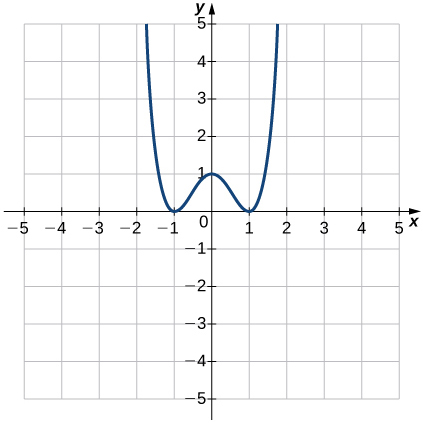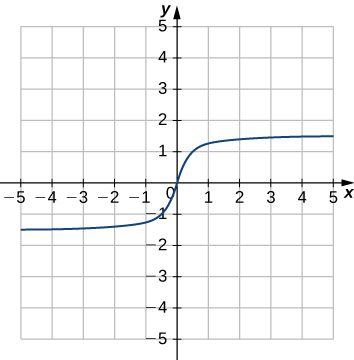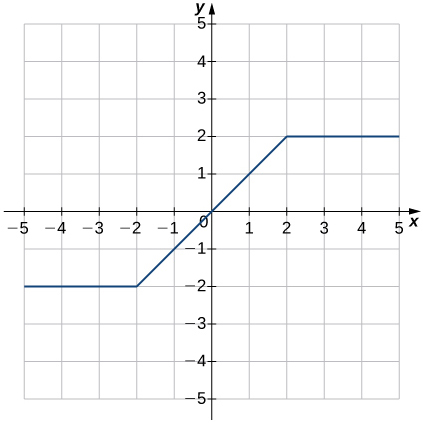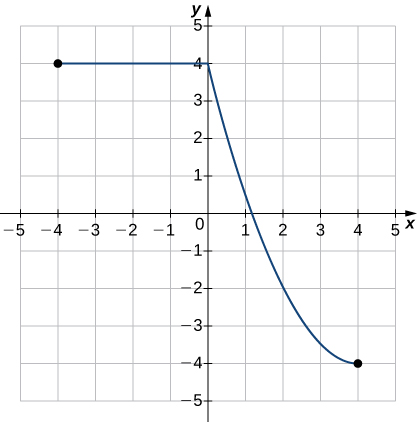| << Chapter < Page | Chapter >> Page > |
For the following exercises, (a) determine the domain and the range of each relation, and (b) state whether the relation is a function.
| −3 | 9 | 1 | 1 |
| −2 | 4 | 2 | 4 |
| −1 | 1 | 3 | 9 |
| 0 | 0 |
a. Domain = range = b. Yes, a function
| −3 | −2 | 1 | 1 |
| −2 | −8 | 2 | 8 |
| −1 | −1 | 3 | −2 |
| 0 | 0 |
| 1 | −3 | 1 | 1 |
| 2 | −2 | 2 | 2 |
| 3 | −1 | 3 | 3 |
| 0 | 0 |
a. Domain = range = b. No, not a function
| 1 | 1 | 5 | 1 |
| 2 | 1 | 6 | 1 |
| 3 | 1 | 7 | 1 |
| 4 | 1 |
| 3 | 3 | 15 | 1 |
| 5 | 2 | 21 | 2 |
| 8 | 1 | 33 | 3 |
| 10 | 0 |
a. Domain = range = b. Yes, a function
| −7 | 11 | 1 | −2 |
| −2 | 5 | 3 | 4 |
| −2 | 1 | 6 | 11 |
| 0 | −1 |
For the following exercises, find the values for each function, if they exist, then simplify.
a. b. c. d. e. f.
For the following exercises, find the domain, range, and all zeros/intercepts, if any, of the functions.
For the following exercises, set up a table to sketch the graph of each function using the following values:
| −3 | 10 | 1 | 2 |
| −2 | 5 | 2 | 5 |
| −1 | 2 | 3 | 10 |
| 0 | 1 |
| −3 | 1 | ||
| −2 | 0 | 2 | 2 |
| −1 | 3 | ||
| 0 | 1 |
| −3 | −9 | 1 | −1 |
| −2 | −4 | 2 | −4 |
| −1 | −1 | 3 | −9 |
| 0 | 0 |
For the following exercises, use the vertical line test to determine whether each of the given graphs represents a function. Assume that a graph continues at both ends if it extends beyond the given grid. If the graph represents a function, then determine the following for each graph:

Function; a. Domain: all real numbers, range: b. c. d. and e. and f. Not constant g. y -axis h. Even

Function; a. Domain: all real numbers, range: b. c. d. e. None f. Not constant g. Origin h. Odd

Function; a. Domain: range: b. c. d. e. Not decreasing f. and g. Origin h. Odd

Function; a. Domain: range: b. c. d. Not increasing e. f. g. No Symmetry h. Neither
For the following exercises, for each pair of functions, find a. b. c. d. Determine the domain of each of these new functions.
a. all real numbers b. all real numbers c. all real numbers d.
a. all real numbers b. all real numbers c. all real numbers d.

Notification Switch
Would you like to follow the 'Calculus volume 1' conversation and receive update notifications?